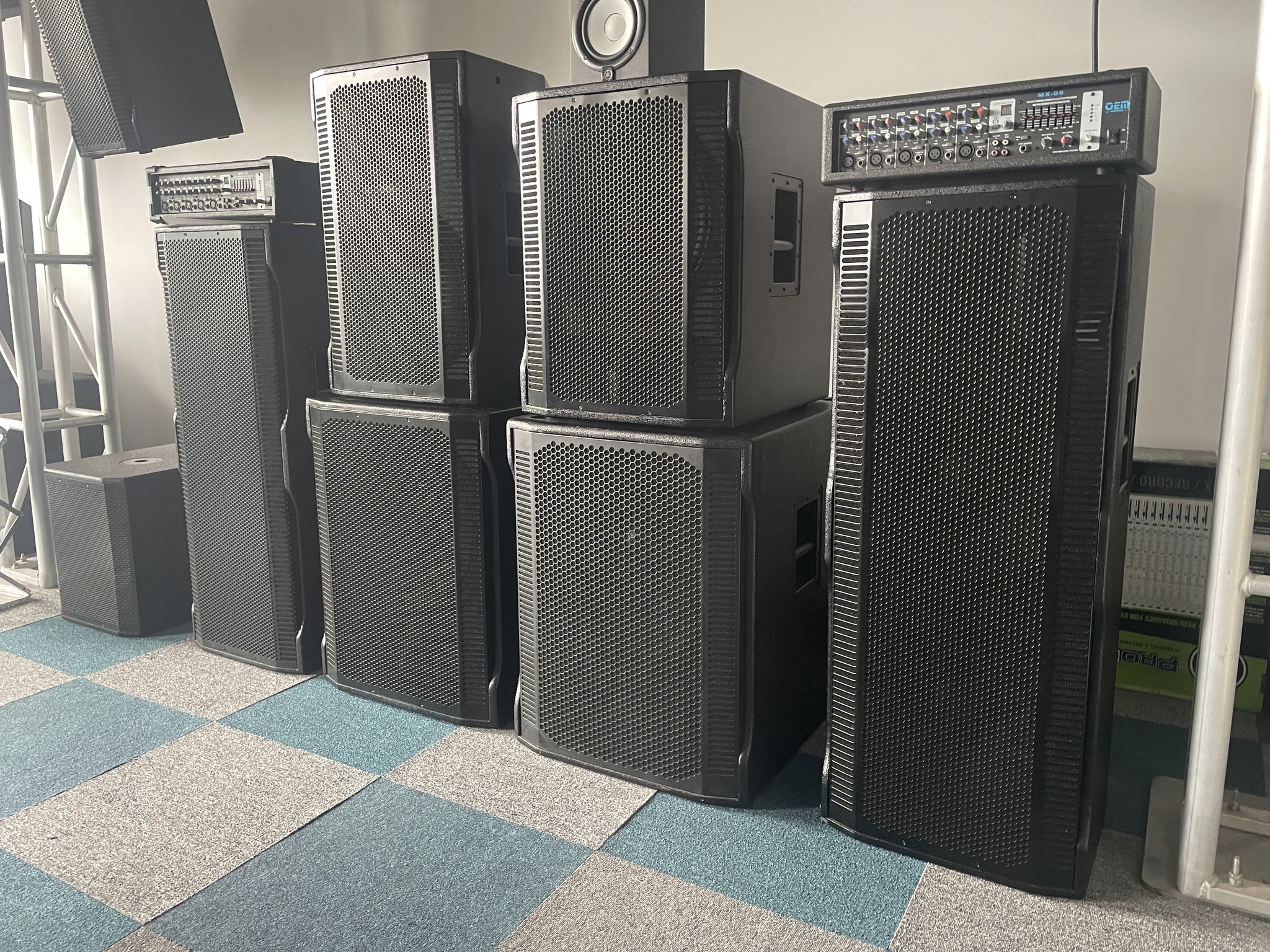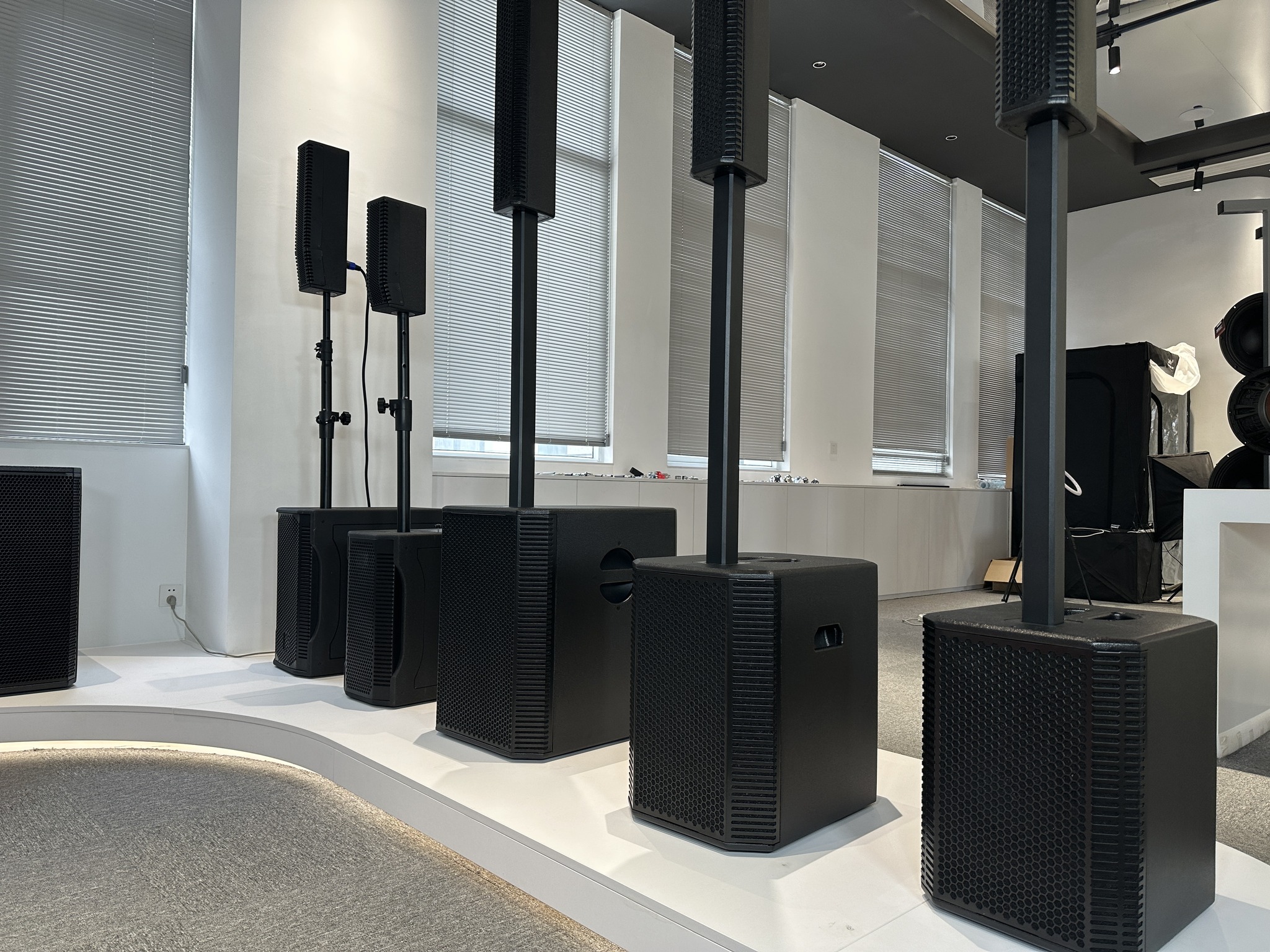There are generally several aspects that affect listening quality:
1. Sound reinforcement system design
2. Equipment layout and construction technology
3. System debugging and measurement
4. The sound source, program source and on-site sound engineer’s tuning management level. The first three issues are related to audio siege design, equipment selection, on-site construction, debugging, and measurement, and can be classified as objective factors; the latter one belongs to on-the-spot performance and is human-centered, so it can be classified as subjective factors.
Equipment selection is the first extremely important link in the design of audio amplification systems. The quality of the equipment directly affects the quality of sound reproduction.
Selection of speakers (speakers)
1. The sound reproduction characteristics and characteristics of various brands of speakers (speakers).
Due to differences in design concepts, manufacturing materials, application positioning, product costs, etc., each brand of speakers (speakers) has its own sound reproduction characteristics and characteristics, so it is necessary to clarify their specific scope of application. For example, some brand models have narrow high and low passbands, bright and clear midrange, low sensitivity, and wide horizontal directivity. Such products are more suitable for speech amplification in small and medium-sized halls; some brand models have the same frequency band. It is very wide, has relatively smooth amplitude-frequency response, good transient characteristics, minimal phase distortion and sound coloration, and has a variety of pointing angles. This type of product is more suitable for long-distance sound reinforcement projection.
2. The sound quality and timbre of the reproduction.
Different brands and types of speakers (speakers) have their own individual styles of sound reproduction, so it is necessary to clarify the sound quality and timbre of each brand of speakers (speakers). For example, some are clear, some are muddy; some are bright, some are Some are dim; some maintain the original flavor, and some change the tone. Therefore, it is impossible for Brand A to be applicable and Brand B to be applicable as well. The selection of speakers (speakers) is completely determined by the objective environmental conditions of the site, the investment of the construction unit, and the characteristic requirements of the program source.
3. Adaptability and subjective listening experience to different program sources.
Speakers (speakers) of different brands and models will have different adaptability to different program sources, resulting in different subjective listening sensations. Choosing a product suitable for sound reproduction of a certain type of program source will provide you with better listening prerequisites, and then you will get better sound reproduction effects after debugging. Therefore, the author does not agree to blindly recommend a certain brand or model of product regardless of actual needs.
4. Transient distortion
5. Frequency response, frequency band bandwidth, frequency characteristic curve.
Among them, the performance quality of (4) and (5) also affects the sound reproduction effect and subjective hearing characteristics. Objective choices for speakers (speakers) include: (1) Structural forms of speakers (speakers), such as integrated and split combination, line source array, horn and paper cone, passive crossover and active Frequency division type; passive (external power amplifier) type and active (built-in power amplifier) type, etc.; (2) Volume and shape; (3) Directivity characteristics; (4) Sensitivity; (5) Propulsion power; (6) Equipment cost.


